
Carolyn Keller
Contributor
Carolyn Keller is a freelance writer, teacher and former journalist with a PhD in English from Binghamton University. She has traveled throughout Latin America, including extended stays in Mexico and Ecuador.
Learn more about Carolyn Keller
May 15, 2023
Seeing can be believing: Tips for responsible travel that can combat the climate crisis
If I’m not careful, when I think about climate change, sometimes my mood takes a turn for the, well, if not nihilistic, at least unhelpfully existential. Climate change is an existential crisis, to be sure, but when I look at the increasingly forceful hurricanes, the exacerbated droughts, or the California wildfires, I sometimes tip perilously toward complete overwhelm.
I ask myself, at an escalating, slightly hysterical pitch: How did we get here? Where is the meaning in any of this? What can we actually do to take care of the world? Anything? ANYTHING?!?
Why Bother?
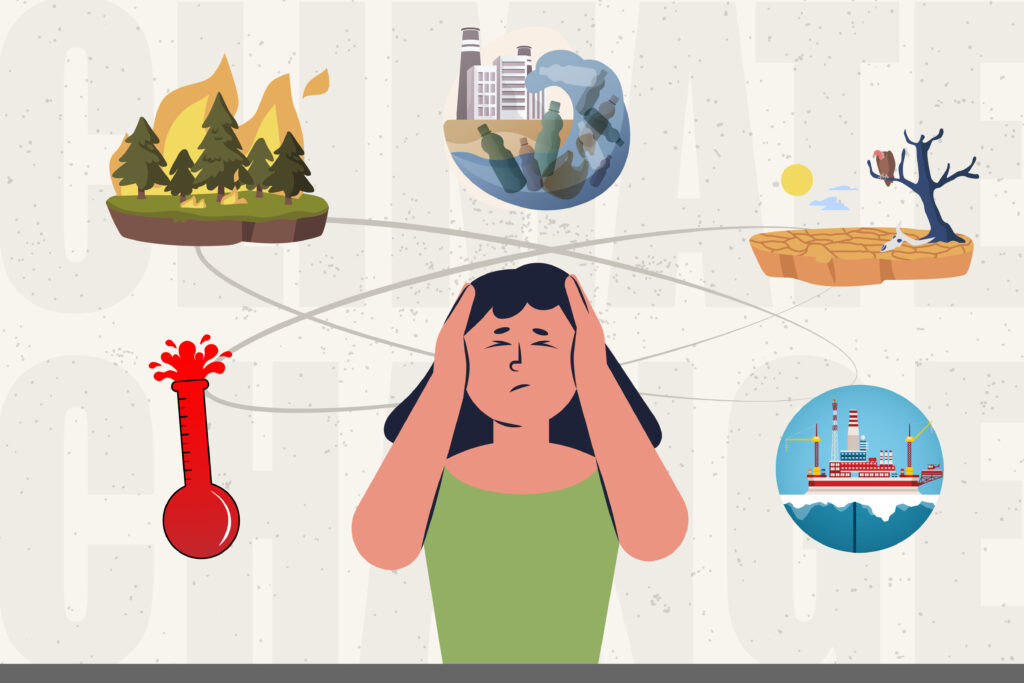
There’s a trap here. Fun fact: I fall into the “freeze” category when it comes to “fight/flight/freeze” responses, and as someone already prone to anxiety in general, it’s easier than it should be for me to go from zero to apocalypse. That’s a short hop and a skip to just throwing up my hands and doing something crazy and despairing, like eating a steak, throwing my beer cans straight in the trash, and setting all the non recyclable plastic mailers that I save to use as garbage bags on fire.
I mean, if we’re going to open up the Arctic for drilling, what does it matter what I do with my plastic bags?
Sometimes I try to console myself in other ways. I mean, if climate change kills us all, at least I won’t have to pay back my student loans, you know?
Look, we all know we need drastic systemic change. We can – and should – try to do our part, like eat less meat, or recycle more, or drive less, or try composting, but if you tell me it all feels a bit like trying to bail water out of the Titanic… I mean, yeah, if that’s how you choose to look at it (and as evidenced above, sometimes I do).
But if you ask me to bail out my life boat? I can help with that. We can all help with that.
Air Travel and Carbon Footprint
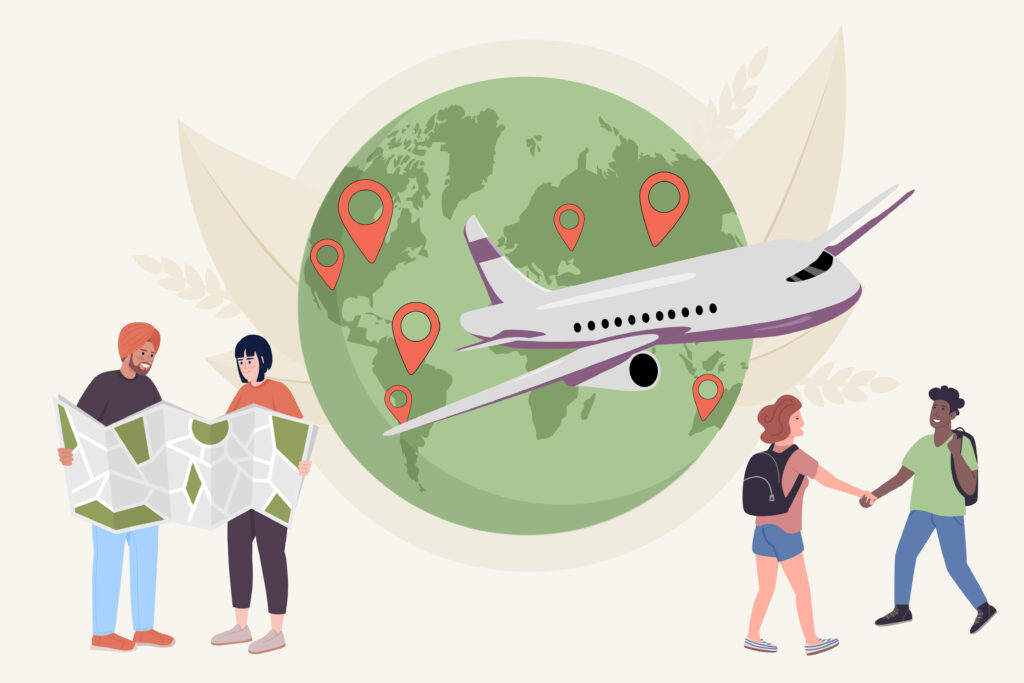
Which brings me to air travel – and buckle up, because this is not going where you think. Yes, air travel’s carbon footprint is undeniable (Kimbrough, 2022). Mongabay gives a frightening statistic: “Airplanes emit around 100 times more CO2 per hour than a shared bus or train ride, and the emissions of global aviation are around 1 billion tons of CO2 per year — more than the emissions of most countries, including Germany” (Kimbrough, 2022, para. 3).
It’s a terrible number, I know. It’s important to see it, and know it. Fly anyway. Hear me out.
Travel is important because it connects us, and without connection, we’d remain unable to understand the full impact of the big picture. We can objectively understand that the climate crisis is scary and terrible… but seeing it firsthand is different. Seeing firsthand the impact of the deforestation in the Amazon on local communities is different.
Travel is important because it connects us, and without connection, we’d remain unable to understand the full impact of the big picture. We can objectively understand that the climate crisis is scary and terrible, and we can shake our heads and cluck that it’s terrible that Pakistan had devastating floods, but seeing it firsthand is different. Seeing firsthand the impact of the deforestation in the Amazon on local communities is different.
So yes, we should see as much of this world as we can, while we can, carbon footprint be damned. Despite the impact travel – specifically air travel – has toward worsening climate change, it also provides crucial avenues for cross-cultural connection, education, engagement and empowerment, and I’m not sure we can afford to give that up.
If we can’t understand each other, learn from each other, and appreciate each other and the worlds we inhabit, across cultures and continents and ecosystems and hemispheres, then a better world is not possible. What would a better world be for?
So yes, you should fly. I mean, drive if you can, of course, but if you can’t? Fly. The question should not be “should I travel,” but rather “how do I travel more responsibly?”
This I can help with.
14 simple steps to travel responsibly
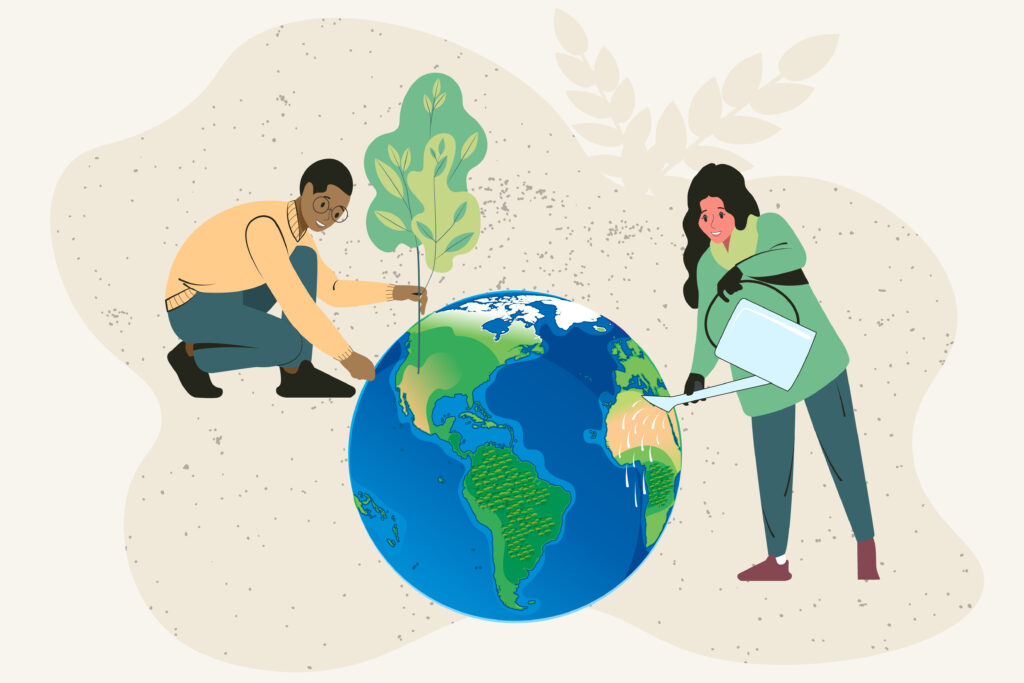
1. Start small. It’s easy to feel overwhelmed (see above). But a lot of what you’re already doing at home translates to travel. So, first, remember it is within your power to take small actions to make a big difference in local, specific communities. And that’s not nothing.
It may feel like nothing. But it’s not.

2. Bring your own water bottle. Plastic bottles are a curse when traveling. I mean, they’re a curse in general (“Reasons to Avoid Bottled Water,” n.d.), they’re disgusting even before they make their way to you and then into our oceans, but they’re especially a curse when traveling. It’s too easy to guzzle their contents on a hot day, then promptly dispose of them. I’ve done it.
So, bring your own water bottle, and refill it. This can get a bit tricky if you’re traveling to a place where you can’t drink the tap water, but in that case, do what you can. Iodine tablets or water filters may be an option. Depending on where you stay, there may be fresh water at your lodgings where you can fill up. Ask if there are safe public water sources where you can top off. Think progress, not perfection. Anything you can do to minimize plastic waste is helpful. With that in mind…
3. Commit to avoiding single use containers and plastics altogether. Don’t stock up on travel-size items before you leave. Instead, get reusable containers for your shampoo, conditioner, and other toiletries, and pick up a reusable 3-1-1 bag for airport security. Consider bringing reusable utensils and silicone straws, so you don’t have to use plastic ones. If you do end up with plastic utensils at some point on your travels, reuse those. Bring little compressible tote bags that you can expand to put any purchases in. It’s that simple.

4. Rethink your sunscreen. Regular sunscreens can be incredibly harmful to marine ecosystems. Rolling Stone has a fantastic article devoted to why and how they’re so damaging (Bell, C. & Hartzog, O. 2022). The cliff’s notes:
- Avoid spray-on sunscreens. Most of the aerosol spray lands on the sand, which impacts wildlife that nest and live there, like baby turtles, or sand crabs. Which seagulls then eat. And which the ocean, at high tide, washes out to sea. Gross.
- Wear long sleeves, rash-guards, and clothing with UV protection to minimize your need for sunscreen. If you’re like me, and typically have the choice between going full-lobster or full-vampire at the beach, you may already be aware of this. Long sleeves, hats and umbrellas are your friends, and the earth’s too.
- Splurge on the Reef-Safe Sunscreen. Yes, it’s more expensive. But depending on where you’re traveling, it may also be required. For fellow shoestring budget travelers: engage in some creative thinking, and fold the cost of your eco-friendly sunscreen into the cost of your flight, then tell yourself it was the cheapest flight you could get. Or, if you still hesitate to purchase it for yourself, purchase it for the baby turtles.
I mean for god’s sake, what are you, a turtle murderer?
5. Travel over land when you can, and when you can’t, offset your carbon footprint.
If possible, drive to your destination. But if you can’t, and you can afford it, offset your carbon footprint. Sustainable Traveler offers information on purchasing carbon credits and a carbon calculator (“Carbon Offsets,” n.d.). This is how I found out my flights from Pennsylvania to Nepal in 2014 generated 4.5 metric tons of carbon (!) (“Carbon Footprint Calculator,” n.d.). It’s also how I found out I could offset this by purchasing credits for $72.00 (again, for budget travelers, some creative thinking may be required).
Note: this practice is controversial, requires research, and (shocker) is no substitute for more substantial systemic change (Astor, M. 2022).

6. Pack light. There’s a reason airlines charge extra for added baggage, and it’s not just because they’re money-hungry. The heavier the plane, the more fuel it needs to burn to get where it’s going. Lightening your load, particularly where air travel is concerned, can help lighten the earth’s load too.
7. Stay in eco-lodges. Eco-lodges can be a great way to immerse yourself in a local culture and its surrounding environment and ecosystem. They offer a place to stay that emphasizes sustainability in regard to the energy and resources they use, in order to minimize their impact on the local environment.
Since you’re here, the Ese Eja People run Posadas Amazonas in Peru. And New Community Project – the group I traveled to Nepal with – offers a Amazonian learning tour, like a mini-study abroad trip, with the Siona tribe in Cuyabeno Park in Amazonian Ecuador. The trip emphasizes engagement, and a deeper understanding of the devastating impact that palm oil, mining and petroleum have on delicate ecosystems, and by extension, how they exacerbate climate change. So, if you’re considering group travel…

8. Choose an environmentally conscious and ethical tour group. If you’re looking for a group experience, why not look for a responsible organization that pledges to travel sustainably and with respect for local communities? I’ve already mentioned a few, and The Guardian has a great list (Dunford, J. & Smith, J. 2019.) But that’s just a starting place – there are many more!
Environmentally conscious tour groups may also have location-specific suggestions for how you can be intentional in regards to the environment on your trip. When I was planning to hike the Salkantay Trail to Machu Picchu, WHOA Travel, a women’s adventure travel company, emphasized the importance of packing in and packing out – a practice of taking all of your trash home with you to minimize environmental impact. They also hire local female guides, offset the trip’s carbon footprint, and arrange for the group to spend a day with a local indigenous community (“Our FAQ.” n.d.). Because of the political instability in Peru, my trip has been postponed, but I’m looking forward to it, and I’m learning about the crisis – and its roots – in the meantime (“Peru: Lethal repression…” 2022).
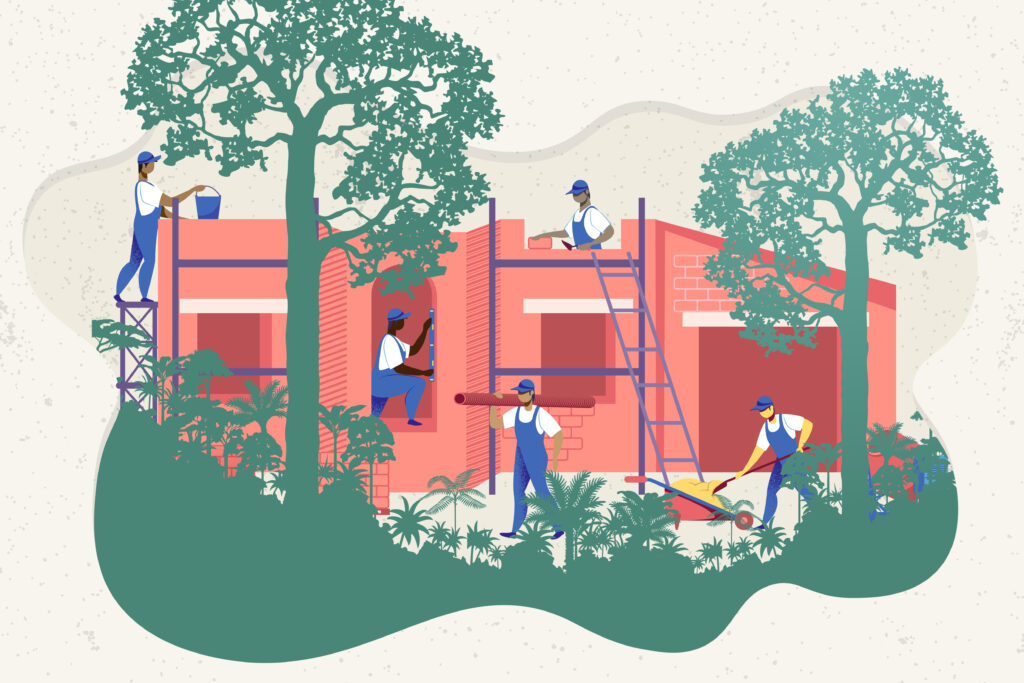
9. Consider travelling somewhere rebuilding from a disaster. If you don’t have a destination in mind already, and when it’s safe to do so, consider investing your tourism dollars in a place that has been impacted by a natural disaster and also depends on a tourism economy. Traveling to Nepal after the devastating 2015 earthquake, or to Puerto Rico after it was slammed by Hurricane Maria in 2018, helped both begin to rebuild. Earthquakes and hurricanes can take years to recover from, and the latter will only occur more forcefully and frequently as the climate crisis worsens.
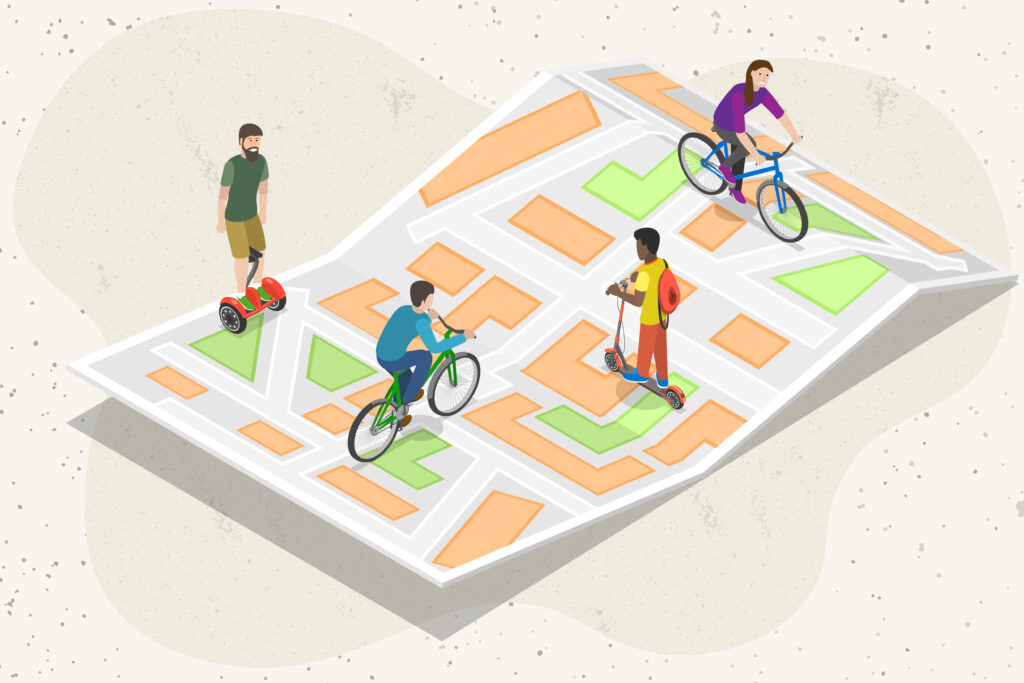
10. Travel like a local. Good news! Maximizing authentic cultural experiences, like walking around the historic center of a city, lingering in a café for people watching, or hiking to a scenic overlook, is often naturally environmentally friendly.
So: when you can, use local mass or clean transit. Take the metro, the bus, a bike, a rickshaw. Quick disclaimer: if you’re traveling solo, remember – as always – it’s OK to keep safety in mind. Sometimes a well-lit metro is the best way home. Other times, it may be a cab. Again, we’re looking for progress, not perfection.

11. Support the local economy. What’s better than indulging in a ripe mango in Mexico? A candy-apple sweet cherimoya in Ecuador or Taiwan? And where better to find what’s local and in season than a farmer’s market? Supporting a local economy can be very delicious.
Also, check out artisan markets. One of my favorite memories from my trip to Morocco is stumbling upon an artisan co-op in Marrakesh while trying to walk to Djemaa el Fna, the main square and medina. There, my friends and I found affordable art, leather goods, clothing, jewelry – all of it made by local artists. We wouldn’t have found it if we hadn’t gotten completely turned around after a very necessary stop in a pastry shop, so getting a little lost is a good idea too.
Now, whenever I see the two little paintings I bought, or I’m digging for my keys at the bottom of my study, beautiful Marrakesh-born purse, I think of my trip and smile – and the money I spent went directly to locals in the community.

12. Drink local beer – really! This is my favorite –and most unexpected – piece of advice (“Intrepid’s 10 Simple Tips…” n.d.).
“Beer mileage” refers to your favorite brew’s carbon footprint, which is worse when it’s an import. The Guardian has an interesting breakdown of this, where everything from ingredients to electricity to freight contributes to a significant disparity between local, domestic and imported beer (Berners-Lee, M. 2010). The article includes a fairly shocking statistic: “a few bottles of imported lager per day might add up to as much as a tonne of CO2e per year – equivalent to around 50,000 cups of black tea” (Berners-Lee, M. 2010).
For those that abstain from drinking beer or alcohol for many good reasons, give yourself an extra pat on the back for combatting climate change to boot.
And for those of you who do indulge, yes it’s true: you can experience local culture, help the environment, and satisfy your otherwise snobby, adventurous tastebuds. Cheers.
13. Pack in and pack out. You may be familiar with the practice of hiking out your trash, but the practice doesn’t end when the trail does. What you bring with you may impact the local environment in unexpected ways, so it’s important to learn about the specific situations of the communities you’re visiting.
A case in point: a friend told me a story of how some well-meaning tourists brought lunch to a local indigenous community in Peru as a gesture of goodwill and connection. It was a lovely gesture, but they initially didn’t plan to bring their trash with them when they left.
What they didn’t realize was that, while many of us live in places where trash is collected, processed and brought to a landfill, some more remote locations in developing countries and communities don’t have this option, and often have to bury or burn what they use – including plastics.
Luckily, someone talked to the visitors, who did carry their trash out. But guys, I’m as well-meaning a traveler as it gets and before I heard this story? This never would have occurred to me.
Which brings me to…

14. Travel with an open mind and a willingness to learn, and have the grace and humility to learn from your mistakes and the communities you’re visiting. Learning how to take better care of our world and each other is a process. Nobody’s perfect, and that’s OK. What matters is that we stay open to learning from each other and doing better for each other and our world.
That’s what travel is all about, right?
More reading:
- The Pygmy Elephant Blog offers a lovely breakdown on all things eco-lodge: how they work, why to stay in them, and what to watch out for, like greenwashing.
- Intrepid travel offers a great guide to being community-engaged no matter where you are in the world. They’re also where I got the beer advice (via WorldNomads).
Works Cited:
- Amnesty International. (2023, February 16). Peru: Lethal state repression is yet another example of contempt for the Indigenous and campesino population. https://www.amnesty.org/en/latest/news/2023/02/peru-lethal-state-repression/
- Astor, M. (2022, May 18). “Do Airline Climate Offsets Really Work? Here’s the Good News, and the Bad.” The New York Times. https://www.nytimes.com/2022/05/18/climate/offset-carbon-footprint-air-travel.html
- Balmforth, E. (n.d.). Pygmy Elephant. https://www.pygmy-elephant.com/blog/eco-lodges
- Bell, C. & Hartzog, O. (2023, April 3). “Most Sunscreens Harm Reefs and Wildlife – Use These Eco-Friendly Options Instead.” Rolling Stone. https://www.rollingstone.com/product-recommendations/lifestyle/best-reef-safe-sunscreen-1180223/
- Berners-Lee, M. (2010, June 4). What’s the carbon footprint of … a pint of beer? The Guardian. https://www.theguardian.com/environment/green-living-blog/2010/jun/04/carbon-footprint-beer
- Dunford, J., & Smith, J. (2019, January 26). “10 of the best ethical travel companies.” The Guardian. https://www.theguardian.com/travel/2019/jan/26/10-best-ethical-travel-companies-local-community
- Harvard University. (n.d.) Reasons to Avoid Bottled Water. Sustainability. https://green.harvard.edu/tools-resources/green-tip/reasons-avoid-bottled-water
- Kimbrough, Liz. (2022, April 6). “How much does air travel warm the planet? New study gives a figure.” Mongabay. https://news.mongabay.com/2022/04/how-much-does-air-travel-warm-the-planet-new-study-gives-a-figure/
- Kirk, D. (2019, February 6). “10 ways you can be a responsible traveller.” Intrepid: The Journal. https://www.intrepidtravel.com/adventures/how-to-be-a-responsible-traveller/
- Sustainable Travel International. (n.d.) Carbon Footprint Calculator. https://sustainabletravel.org/our-work/carbon-offsets/calculate-footprint/
- Sustainable Travel International. (n.d.). Carbon Offsets. https://sustainabletravel.org/our-work/carbon-offsets/
- WHOA Travel. (n.d.) Our FAQ. Retrieved on April 8, 2023. https://www.whoatravel.com/faq.
- World Nomads. (n.d.) Intrepid’s 10 Simple Tips to Being an Eco-Friendly Traveler.

Very nice piece of work, Carolyn! Travel done unwell is a burden on the planet and our neighbors – that is, travel done without an intention to live and learn with the place we are in, and see how our lives are connected with theirs. Travel done well – with an aim toward changing us and our outlook on life and relationships with nature and neighbor – can be a key for changing the course of climate change, economic exploitation, cultural imperialism and much more.
Thanks for pulling all these good ideas together! I’ll be sharing this with our future Learning Tour groups. https://www.newcommunityproject.info/learning-tours
David Radcliff
Director, New Community Project